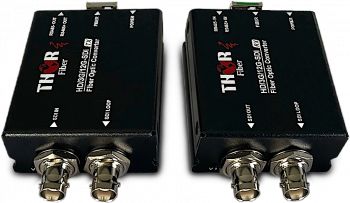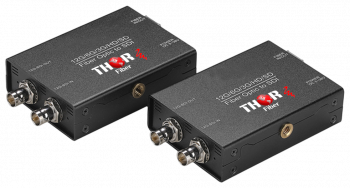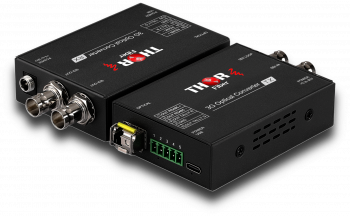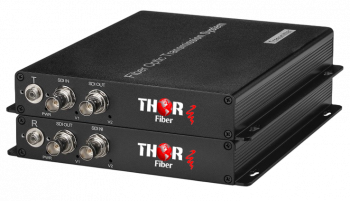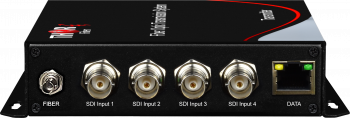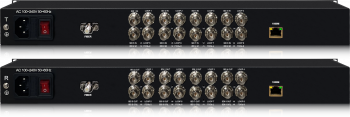Our SDI to Fiber units convert electrical SDI to light with a specific optical frequency - wavelength called CWDM. This way, multiple SDIs or other video or data signals could be optically multiplexed without any delay
SDI, or Serial Digital Interface, is a standard for transmitting uncompressed digital video and audio signals over coaxial cables. It's widely used in professional video production, broadcasting, and surveillance systems due to its high-quality, low-latency transmission capabilities. SDI supports various video resolutions, including standard definition (SD), high definition (HD), and ultra-high definition (UHD).
Transmitting high-speed digital video over long distances presents challenges such as signal degradation and interference. Fiber optic cables offer a solution by utilizing light pulses to carry data. Unlike traditional copper cables, fiber optics are immune to electromagnetic interference, ensuring reliable transmission over vast distances without signal degradation.
The process begins with the conversion of the SDI signal into an optical format using specialized transmitters. These transmitters modulate the electrical SDI signal into optical signals, which are then transmitted through the fiber optic cable. At the receiving end, optical receivers convert the optical signals back into electrical SDI signals, ensuring seamless integration into video production systems.
Fiber optic technology provides several advantages for long-distance SDI transmission. It offers higher bandwidth, allowing for the transmission of high-speed digital video signals, including 12G-SDI for ultra-high-definition content. Additionally, fiber optics are immune to electromagnetic interference and can span much longer distances compared to traditional copper cables, making them ideal for demanding applications in broadcasting, live events, and surveillance where reliability and signal integrity are paramount.
21

SpiderSDIPro
SpiderSDI Pro is an EFP fiber transmission system, Electronic Field Production over fiber, extends broadcast camera signals over one single-mode fiber.
It includes a camera-mountable portable unit and a 19-inch rack mountable unit.
The unit supports
1 channel bidirectional 12G SDI video
1 channel bidirectional mini XLR audio
1 channel reverse tally
1 channel reverse 3.5 Intercom
1 channel gigabit Ethernet
Single-mode single-fiber 10km LC connector
Our 12G-SDI multi-function EFP fiber transmission system is our company's point-to-point fiber transmission equipment for large-scale event scene video shooting. It utilizes optical multiplexing transmission technology to provide camera operators with one channel of 12G-SDI video, forward video signal with loop out, one channel reverse 12G-SDI video, one channel forward XLR balanced audio, one channel reverse XLR balanced mono audio, one channel reverse 2.5mm physical interface remote control signal, one channel 3.5mm physical interface unbalanced audio voice intercom with volume adjustment, two channel reverse tally signals (transmitter LEMO physical interface 4 pins, receiver DB9 physical interface), one channel gigabit Ethernet signal, and one fiber interface which is LC

 ES
ES


